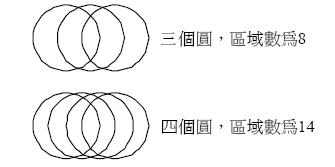小P收藏庫
曾經被Google封禁的神秘網站。
2022年9月30日 星期五
2022年9月26日 星期一
2020年7月8日 星期三
2020年6月24日 星期三
2020年6月3日 星期三
2019年9月25日 星期三
In Python 3, m = [i] vs m[0] = i
在Python 3裡, assign是call by value? 還是call by reference呢?
Python自創了一個名詞,說是call by assignment.
但是從C語言學起的我,還是用call by value or call by reference來說明,會比較清楚。
如果i is integer, then:
case I:
m = [i]
case II:
m[0] = i
Q: 這兩者差在哪呢?
A:
case I:
m = [i], 是call by value, 也就是把m指向[i]位子的value。
case II:
m[0] = i, 是call by reference, 也就是把m[0]位子的值,設成i.
也許有人會覺得,出來的值都一樣,那有啥差別呢?
請看以下code:
#會印出:
byRef
m= [0]
['good']
m= ['good']
['afternoon']
byValue
m= [0]
['fine.']
m= [0]
['thanks']
byValue1
m= 0
1
m= 0
1
byValue2
m= 0
2
m= 0
2
Python自創了一個名詞,說是call by assignment.
但是從C語言學起的我,還是用call by value or call by reference來說明,會比較清楚。
如果i is integer, then:
case I:
m = [i]
case II:
m[0] = i
Q: 這兩者差在哪呢?
A:
case I:
m = [i], 是call by value, 也就是把m指向[i]位子的value。
case II:
m[0] = i, 是call by reference, 也就是把m[0]位子的值,設成i.
也許有人會覺得,出來的值都一樣,那有啥差別呢?
請看以下code:
class Solution: def byValue(self, t, m = [0]): print('m=', m) for i in t: m = [i] return m def byRef(self, t, m = [0]): print('m=', m) for i in t: m[0] = i return m def byValue1(self, t, m = 0): print('m=', m) for i in t: m = 1 return m def byValue2(self, t, m = 0): print('m=', m) for i in t: m = 2 return m def main(): a = Solution() print('byRef') print(a.byRef(['good'])) print(a.byRef(['afternoon'])) print('byValue') print(a.byValue(['fine.'])) print(a.byValue(['thanks'])) print('byValue1') print(a.byValue1(['good'])) print(a.byValue1(['afternoon'])) print('byValue2') print(a.byValue2(['fine.'])) print(a.byValue2(['thanks'])) if __name__ == "__main__": main()
#會印出:
byRef
m= [0]
['good']
m= ['good']
['afternoon']
byValue
m= [0]
['fine.']
m= [0]
['thanks']
byValue1
m= 0
1
m= 0
1
byValue2
m= 0
2
m= 0
2
訂閱:
文章 (Atom)
-
之前安裝photoshop CS2常常不能破解, 今天總算安裝成功, 原來是忘了執行"crack.exe"。 詳細step as follows: 1.安裝photoshop cs2,在安裝過程中,必須"一直按下一步", 不能改目錄位置,也...
-
不曉得是Pygame本身的缺陷或bug,Pygame程式執行一段時間,必需要呼叫event一下,否則程式會變成沒有回應的情況,而程式畫面也會暫時停止更新。解決方法,就是確定程式沒互動時,get一下event,但也不是隨時都可以get event,因為當有event要處理時,例如...





















